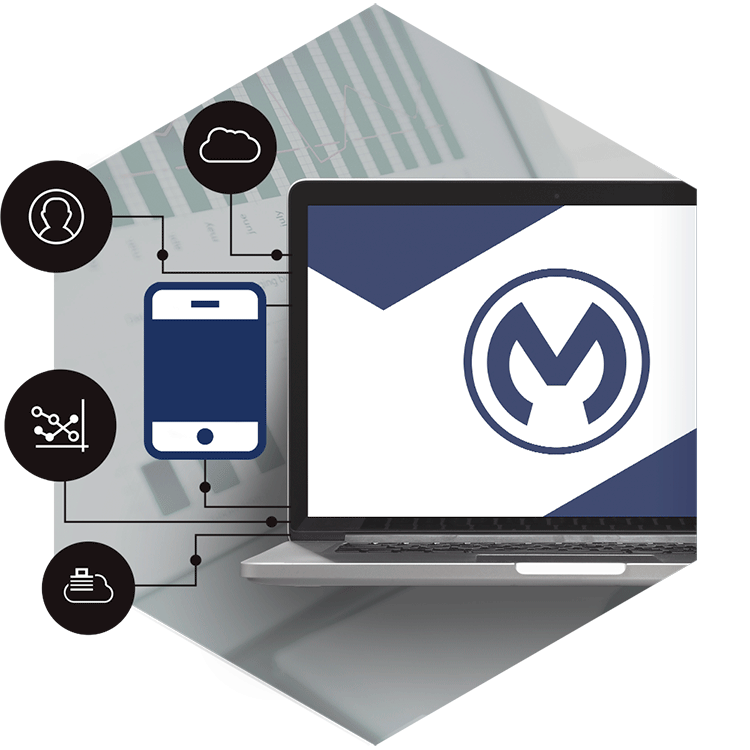MuleSoft Integration
Having an extensive track record of handling Mule integration, our team will help you to access MuleSoft's range of capabilities that amplify all areas of your business.

MuleSoft Integration Pattern Overview
MuleSoft Integration Patterns Specification
When deciding on an integration pattern, there are many things to consider. We break down the various integration patterns for you:

Correlation
The correlation data integration pattern is a design that identifies the intersection of two data sets and does a bi-directional synchronization of that scoped dataset only if that item occurs in both systems naturally. This is similar to how the bi-directional pattern synchronizes the union of the scoped dataset and correlation synchronizes the intersection.

Bi-directional sync
The bi-directional sync data integration pattern is the act of combining two datasets in two different systems so that they behave as one while respecting their need to exist as different datasets. This type of integration needs to come from having various tools or systems to accomplish other functions on the same dataset.

Aggregation integration pattern
The aggregation pattern derives its value from allowing you to extract and process data from multiple systems in one united application. This means that the data is up to date when needed, does not get replicated, and can be processed or merged to produce the dataset you want.

Broadcast pattern
Broadcast can also be called "one-way sync from one to many," It is the act of moving data from a single source system to many destination systems on an ongoing, near real-time or real-time, basis. Typically "one-way sync" implies a 1:1 relationship, and to us, it is just an instantiation of the broadcast pattern, which is a 1:Many relationship. Hence we chose the name broadcast even though it will manifest itself as a 1:1 in many integration applications.

Data migration
Data migration is the process of moving data from one location to another, one format to another, or one application to another. Generally, this is the result of introducing a new system or location for the data.

MuleSoft Integration Solutions


Mobile integration
Mobile integration connects different apps and devices to achieve seamless data exchange and optimized workflows. It helps increase flexibility and improve the efficiency of various business processes.

Salesforce integration
Salesforce integration is the process of integrating your Salesforce CRM with other systems and applications, such as ERP, Marketing Automation, HCM etc. There are many reasons why businesses want to integrate Salesforce with their other systems.

ServiceNow integration
The ServiceNow platform is based on service-oriented architecture (SOA), in which all data objects can use web services to access bi-directional data-level integration. The interface is also direct and dynamic because all modifications to existing objects and new objects are automatically published as a Direct Web Service.

Data integration
Data integration is a group of technical and business processes — such as ETL, data replication and virtualization — that combine data from disparate sources into a meaningful and valuable data set for business intelligence and business analytics.

Solutions for B2B/EDI
EDI stands for Electronic Data Interchange and is the exchange and processing of documents electronically, utilizing a standard format. It allows for accurate and reliable transmission of data between your systems and those of your trading partners. EDI integration means the transfer, mapping, and translation of EDI data to and from business applications and is an essential piece of how businesses create efficiencies.

SaaS application integration
SaaS integration, or SaaS application integration, involves connecting a SaaS application with another cloud-based app, cloud services or an on-premise software via application programming interfaces (APIs). Once connected, the app can request and share data freely with the other app or on-premise system.
MuleSoft Integration Platform Benefits
- 01Increased engagement
Give your team secure access to complete and accurate customer information. MuleSoft Anypoint brings disparate customer systems and data sources together to build a 360-degree customer view, allowing you to deliver personalized experiences, anticipate future needs, and improve customer loyalty.
- 02Connect to core systems faster
Unlock data easily with Anypoint Platform's pre-built connectors and automated data mapping. Machine learning-based recommendations continue to get better over time.
- 03Reduced risk and costs of security breaches
MuleSoft's Anypoint platform includes advanced security by default, with end-to-end governance that ensures compliance with local, regional, and industrial regulations. The solution enforces global access control and threat protection at every system layer, assuring confidentiality and integrity of the information you share.
- 04Improved agility
MuleSoft Anypoint enables you to quickly and easily introduce new systems, software versions, devices, and data sources. You'll be able to rapidly respond to changing market conditions and take advantage of time-sensitive new opportunities.



.png)
Business Challenges solved
Scalability

Performance

Technical Challenges Solved
According to MuleSoft, the average organization uses more than 1,000 individual apps across the enterprise. Mule integration can allow each app to "communicate" with one another and unlock the siloed data located inside. We can help you integrate new applications into your existing IT infrastructure, thus taking care of all integration challenges allowing you to focus on innovation.
Business Process Management
Why Choose Softwarium for MuleSoft Development?
Softwarium provides an API strategy that connects your application ecosystem, offering tailor-made digital strategy, consulting to determine and achieve your business goals. That's just part of what we do.
We offer expert MuleSoft development services, making your ecosystem more connected and integrated than ever, designing results-driven digital solutions. Whether on-premise or cloud-based, we will connect and integrate your application, data source, or API. Our expert MuleSoft enterprise architects design scalable architecture that supports multi-platform integrations, all based on your business requirements.
Frequently Asked Questions
- Is MuleSoft an integration tool?MuleSoft is a vendor that provides an integration platform to help businesses connect data, applications and devices across on-premises and cloud computing environments.The company's Anypoint Platform integration platform includes various tools to develop, manage, and test application programming interfaces (APIs and integrations), which support these connections.
- What is Salesforce MuleSoft?
In May 2018, Salesforce bought MuleSoft for $6.5 billion. Since MuleSoft creates APIs to connect different systems, this could be useful for Salesforce as a bridge between older software on-prem or in the cloud.
- Is MulSoft an API?
MuleSoft is not an API, but it has plenty of tools to create APIs and integrations. MuleSoft life cycle API management tells us how effectively and efficiently we can use the MuleSoft Anypoint platform while going through different stages of the APIs lifecycle.
- What is MuleSoft used for?
MuleSoft makes it easy to unify data to deliver a single customer view, automate business processes, and build connected experiences. By using a modern API-led approach, each integration becomes a reusable building block.